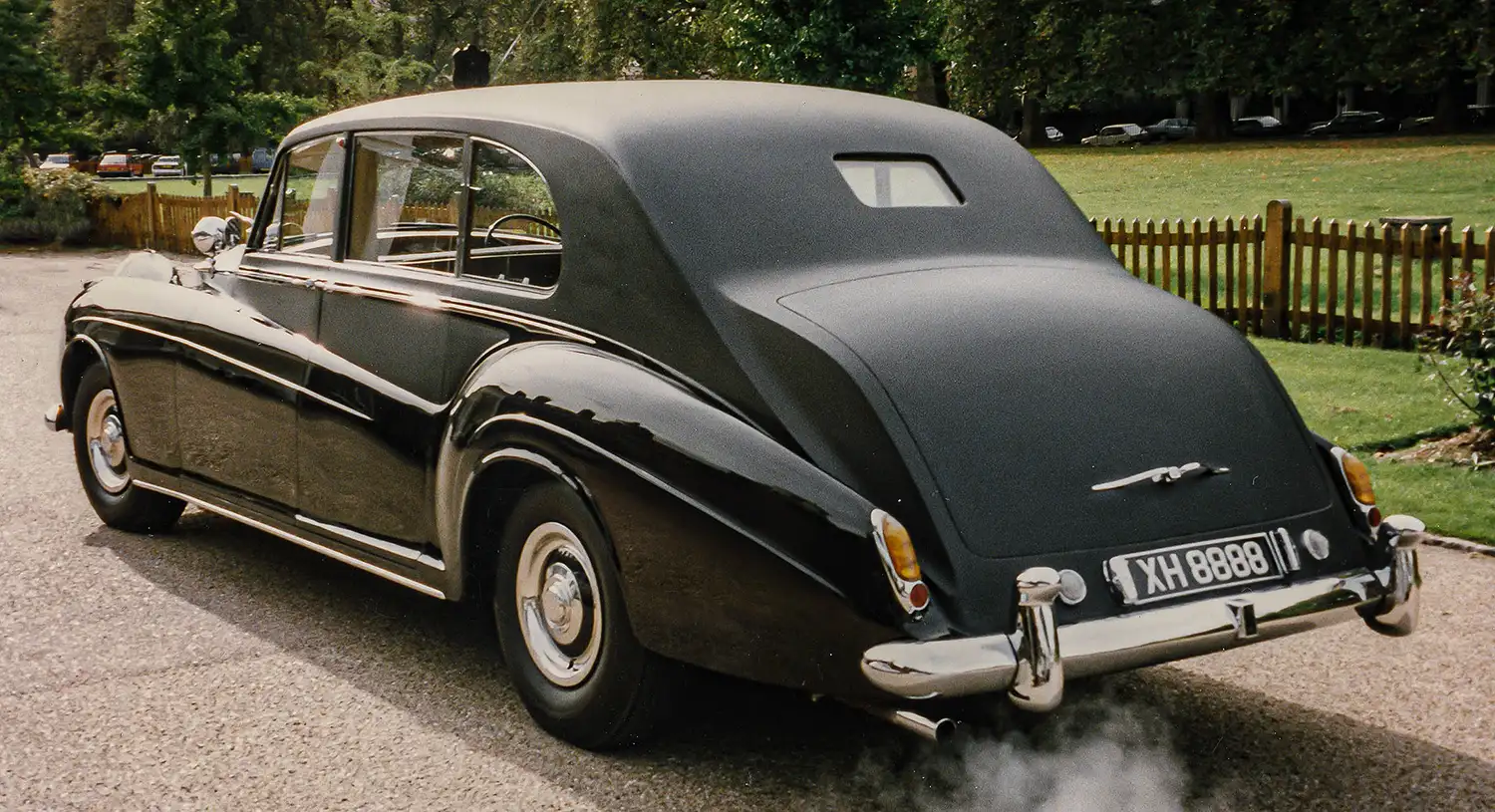
The 1960 Rolls-Royce Phantom V, chassis number 5AT30, is a vehicle that stands as a testament to both the exquisite craftsmanship of Rolls-Royce and the unique tastes of its distinguished owner, HRH The Duke of Gloucester. Launched in 1959 to replace the venerable Silver Wraith, the Phantom V was designed primarily for chauffeur-driven use, with most models embodying the classic limousine style. However, 5AT30 is a remarkable exception, reflecting a blend of traditional British elegance and the personal preferences of royalty.
A Unique Expression of Royalty
Delivered in September 1960, 5AT30 was commissioned by HRH The Duke of Gloucester, the third son of King George V and Queen Mary, and uncle to Queen Elizabeth II. The Duke’s Phantom V was based on the PV15 design by the renowned coachbuilder James Young, a design still celebrated for its graceful lines and stately presence.
While the Phantom V was typically associated with formal black finishes, the Duke’s vehicle broke from tradition. The car featured a striking paint combination of matte black for the horizontal surfaces and gloss black for the vertical planes, giving it a distinctive and refined appearance. This bold choice in color scheme was just the beginning of the custom touches that made 5AT30 stand out.

Bespoke Features Fit for a Duke
The Duke of Gloucester’s Phantom V was not only unique in its aesthetic appeal but also in its bespoke features. Among the customizations were a smaller-than-standard rear window, large fog lamps, door-mounted driving mirrors, and sliding shutters on the rear windows for added privacy. The car was also equipped with two Stephane Grebel spotlights and Lucas R100 headlamps, replacing the standard faired-in headlights, which further enhanced its distinguished look.
One of the most notable deviations from the norm was the replacement of the iconic Spirit of Ecstasy mascot. In its place, the Duke chose a personal mascot—a majestic eagle in flight, symbolizing his distinct identity and tastes. Additionally, 5AT30 was one of the first Rolls-Royce vehicles to feature an “umbrella in holder,” a detail that has since become a standard feature in modern Rolls-Royce cars.
The Remarkable Resilience of 5AT30
The Duke’s Phantom V is not only remembered for its bespoke features but also for its remarkable resilience. On January 30, 1965, while returning from Sir Winston Churchill’s funeral, the Duke and Duchess of Gloucester experienced a harrowing accident. Their Phantom V skidded off the road, rolled down a shallow embankment, and overturned three times before coming to rest on its roof. Miraculously, none of the occupants suffered serious injuries, a testament to the strength of the James Young coachwork.

Despite the severity of the accident, 5AT30 was meticulously rebuilt and continued to serve the Duke for many years. The car’s survival and continued service after such an event underscore the exceptional durability and craftsmanship that Rolls-Royce is known for.
A Legacy of Excellence
Today, the 1960 Rolls-Royce Phantom V (5AT30) is remembered not only as a royal vehicle but as a masterpiece of automotive design and engineering. Its blend of traditional elegance, bespoke features, and remarkable resilience make it a significant chapter in the storied history of Rolls-Royce. This vehicle remains a symbol of the brand’s commitment to creating motor cars that are not only luxurious but also built to withstand the test of time, serving their owners with grace and distinction for decades.
Source: Rolls-Royce
This Article use tools from Chatgpt
